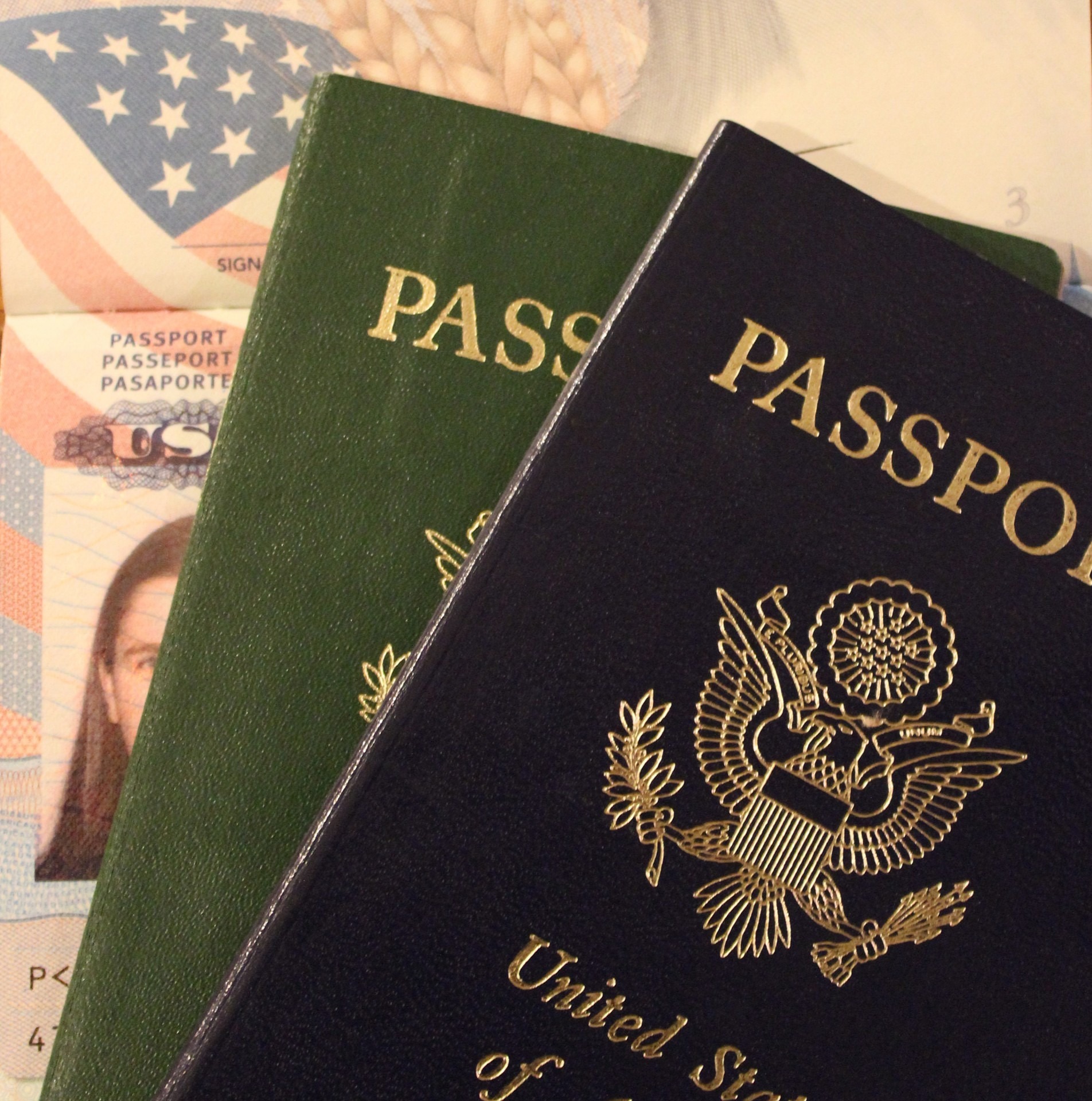Embark on a journey where love knows no borders and dreams know no limits. From understanding different visa categories to overcoming common challenges and preparing for interviews, this guide equips you with the knowledge and strategies needed to embark on your path to success. Join us as we unravel the complexities and offer expert insights to help you and your loved one unite on American soil. Please remember that this article does not provide any legal advice and if you would like to discuss your immigration situation, please speak with the immigration attorney. If you would like to speak with our lawyer, please contact us here.
Starting the Adventure: the Spouse Visa Process in the U.S.
Embarking on the journey of obtaining a spouse visa in the United States marks the beginning of an exciting adventure filled with anticipation, challenges, and ultimately, the promise of love and togetherness. It is essential to arm yourself with knowledge and preparation to navigate the intricate landscape of the United States immigration system.
Understanding the nuances of each visa classification, meeting eligibility criteria, and compiling the necessary documentation are crucial steps in ensuring a smooth and successful application process. However, it’s not without its challenges. From overcoming potential hurdles to adjusting to a new country, this journey demands resilience, patience, and determination.
But fear not, for you are not alone on this voyage. With the right guidance and resources at your disposal, you can navigate through the twists and turns of the process with confidence. Our guide aims to serve as your compass, providing clear direction, practical advice, and expert insights every step of the way.
Visa Varieties, Eligibility Criteria, and Opportunities for Spouses
O-1 Visa, EB-1 Green Card & EB-2 National Interest Waiver (NIW)
When it comes to United States spouse immigration, there’s no one-size-fits-all approach. The U.S. offers a variety of visa options tailored to meet the diverse needs and qualifications of spouses seeking to join their loved ones in the country. Whether you’re navigating the complexities of the O-1 visa, pursuing the prestigious EB-1 Green Card, or seeking the EB-2 NIW pathway each step in this process is a significant milestone on the path to reuniting with your loved one in the land of opportunity.
According to the U.S. Citizenship and Immigration Services (USCIS), spouses of individuals applying for various visa categories may be eligible to accompany the primary visa holder to the United States.
Below is a table outlining the eligibility criteria for each category. Afterward, you’ll find a table outlining the opportunities available for spouses in each category.
| Visa Category | Eligibility Criteria | Spouse Visa |
| O-1 Visa | Designed for individuals with extraordinary abilities or achievements in fields such as sciences, arts, education, business, or athletics.Applicants must demonstrate sustained national or international acclaim and recognition for their extraordinary achievements. This can be evidenced through awards, publications, memberships in prestigious organizations, and other notable achievements in their field.Applicants must have a job offer from a U.S. employer or agent who will sponsor their application. | O-3 visa – allows to join the spouse in the US, however, there is no possibility to apply for the work permit. |
| EB-1 Green Card | Reserved for individuals who are internationally recognized as outstanding professors, researchers, multinational executives or managers, or those with extraordinary abilities in their field.It is required to provide extensive documentation demonstrating their extraordinary abilities or achievements. This may include evidence of significant contributions to their field, receipt of major awards or prizes, published work, or membership in associations that require outstanding achievements.In the EB-1A subcategory, individuals with extraordinary abilities in their field can self-petition for the EB-1A Green Card, eliminating the need for a job offer. The EB-1B subcategory mandates a job offer from a U.S. employer. Applicants must secure a permanent position in academia. | EB-1 Green Card – Spouses will also get Green Cards, however, they do not need to prove extraordinary achievements. This green card will be approved based on the main applicant green card approval. |
| EB-2 NIW (National Interest Waiver) | Intended for professionals with exceptional ability whose work is in the national interest of the United States.It allows applicants to self-petition, meaning they do not require a job offer or employer sponsorship. Applicants need to demonstrate their exceptional ability and the national importance of their work. This can be shown through evidence of past achievements, letters of recommendation from experts in the field, and a detailed plan for future work that will benefit the United States. | EB-1 Green Card – Spouses will also get Green Cards, however, they do not need to prove extraordinary achievements. This green card will be approved based on the main applicant green card approval. |
Step-by-Step Guide to Your Spouse Visa Application
1. Understand Your Type of Visa: Start by familiarizing yourself with the particular category you are applying for. Learn about the prerequisites for qualifying, the required paperwork, and the application procedure for the selected petition.
2. Gather Required Documents: Compile all necessary documents needed for your application, including personal identification, proof of relationship with your spouse, financial documents, and any additional required documentation.
3. Complete Application Forms: Fill out the required application forms accurately and completely, ensuring all information is correct and consistent.
4. Submit Your Application: Submit your completed application along with all required documents to the appropriate USCIS office or consulate.
5. Pay Application Fees: Pay any required application fees as instructed by USCIS or the consulate, ensuring you retain proof of payment for your records. The payment for the spouse visa application fees typically occurs after the submission of the application forms and it may vary depending on the specific category and processing location. USCIS or the consulate will provide you with detailed instructions on how to pay the fees.
6. Attend Biometrics Appointment (if applicable): If required, attend a biometrics appointment to provide fingerprints, photographs, and other biometric data as part of the application process.
7. Prepare for Interview (if applicable): If an interview is required, prepare thoroughly by reviewing commonly asked questions, practicing responses, and gathering additional documentation to support your application.
8. Await Decision: After submitting your application and attending any required appointments or interviews, await a decision on your application from USCIS or the consulate.
9. Follow Up as Needed: Follow up with USCIS or the consulate regarding the status of your application, responding promptly to any requests for additional information or documentation.
Consulting with an immigration attorney can simplify the application procedure. Their expertise in navigating United States immigration laws helps prevent errors, ensuring a thorough and successful application.
Paper Trail Success: Essential Documents for Your Spouse Visa Journey
From proof of identity and relationship to financial documents and supporting evidence, each document plays a vital role in demonstrating your eligibility and strengthening your case.
Below you can find examples of documents that might be required while applying for the visa/green card as a spouse.
| Category | Required Documents |
| Personal Identification Documents | Passport: A valid passport with at least six months of validity beyond the intended period of stay in the United States. National ID Card or Birth Certificate: Additional forms of government-issued identification for verification purposes. |
| Proof of Relationship with Spouse | Marriage Certificate: A certified copy of your marriage certificate, demonstrating the legal recognition of your marital status. Photos: Include recent photographs of you and your spouse together, showing your relationship over time. Correspondence: Copies of letters, emails, or other correspondence exchanged between you and your spouse, providing evidence of your ongoing relationship. Mutual financial documents: for example tax returns. Letters from Friends: Letters from individuals who can attest to the authenticity of your relationship and provide character references. |
In addition to gathering the necessary documents, as indicated previously, completing the appropriate forms is a crucial step in the application process. These forms serve to officially petition for the visa, provide information about the petitioner and beneficiary, and demonstrate eligibility for the chosen category.
Below is a list of common forms that may be required for your application depending on which visa/green card path as a spouse you will choose:
O-3 visa:
- Form I-539: Application to change/extend the status (if you are in the U.S. and your current status allows you to change the status to O-3)
- Form DS-160: Online Nonimmigrant Visa Application (if you are outside the U.S.)
EB-1/EB-2 NIW:
- Form I-485 – Application to Adjust the status in the US
- Form I-765: Application for Employment Authorization
- Form I-131: Application for Travel Document
- Form DS-260: Immigrant Visa Electronic Application (if you are outside the U.S.)
Overcoming Hurdles: Tackling Common Challenges in Spouse Visa Applications
While applying for a spouse visa can be a rewarding experience, it’s not without challenges. In this section, we’ll explore some of the common hurdles that applicants may encounter during the application procedure and provide practical strategies for overcoming them.
As mentioned above, presenting the correct evidence in the documentation and proof of the relationship is vital. However, other hurdles include:
Language and Cultural Barriers
Limited proficiency in English can make it challenging to communicate effectively during interviews or understand complex application requirements. This can lead to misunderstandings and delays in processing.
Strategies:
- Practice English language skills, particularly in areas related to immigration terminology and interview questions. Consider enrolling in language courses or engaging in language exchange programs to improve your proficiency.
- Seek assistance from professional interpreters or translators who are fluent in both your native language and English. They can help ensure accurate communication and understanding during interviews and interactions with immigration officials.
- Utilize resources provided by USCIS or the consulate, such as translated materials or language assistance services, to aid in comprehension and communication.
Differences in cultural norms and expectations between your home country and the United States can also present challenges. Misunderstandings or misinterpretations of cultural cues may affect the outcome of your application.
Strategies:
- Familiarize yourself with common interview questions (if you are invited for the interview), and cultural etiquette in the United States. This includes understanding appropriate behavior, dress codes, and communication styles during interviews and interactions with immigration officials.
- Educate yourself about United States cultural norms and values, particularly those related to family relationships, marriage, and societal expectations. This will help you navigate cultural differences more effectively and demonstrate your adaptability to American society.
- Seek guidance from immigration attorneys or cultural experts who can provide insights into navigating cultural barriers and help you present yourself in the best possible light during the application process.
Shine Bright: Strategies for a Successful Spouse Visa Interview, if this was scheduled
The interview is a critical step in the application procedure and can be a source of nervousness or anxiety for many applicants, but preparation is key. Here’s how to get ready:
- Address Nervousness: Manage anxiety with deep breathing or speaking with a supportive friend.
- Practice Mock Interviews: Simulate the interview experience with a knowledgeable partner or immigration attorney.
- Analyze Common Questions: Familiarize yourself with typical interview questions and prepare concise, honest responses.
- Understand the Process: Know what to expect, arrive early, and dress professionally.
Common questions during a spouse visa interview often revolve around the couple’s relationship, personal backgrounds, and future plans. Here are some examples:
- How did you and your spouse meet?
- Describe your relationship history and how it has evolved over time.
- When and where did you get married?
- What do you love most about your spouse?
- How do you communicate with your spouse when you are apart?
- Have you met each other’s families? Can you describe those interactions?
- What are your joint plans for the future? Where do you see yourselves in 5 or 10 years?
- How do you plan to support yourselves financially in the United States?
- What do you know about your spouse’s background, family, and cultural traditions?
- Have you visited each other’s homes or countries? If so, describe those experiences.
These questions aim to assess the genuineness of the relationship and the couple’s suitability for a spouse petition. It’s essential to answer them honestly and provide specific examples to support your responses. Additionally, be prepared to answer any additional questions related to your individual backgrounds, employment, and immigration history.
Beyond Approval: Thriving After Your Spouse Visa Journey
Congratulations on completing the spouse visa application procedure successfully! It’s important to make future plans and ensure a smooth adjustment to your new life in the United States as you begin this new chapter of your life.
Explore Your New Home: Take the time to explore your new surroundings and familiarize yourself with your community. Getting involved in community activities can help you feel more connected and make new friends.
Build a Support Network: Reach out to immigrant communities for support and guidance. Getting involved in social groups or online forums can provide opportunities to connect with others who have gone through similar experiences.
Cultural Adjustment: Adjusting to life in a new country can be challenging, but embracing cultural differences can enrich your experience. Have an open mind and an eagerness to learn about American social norms, traditions, and customs. Seize the chance to extend your horizons and get fully immersed in American culture.
Nurture Your Relationship: Continue to cultivate and strengthen your relationship with your spouse. Spend quality time together, communicate openly, and support each other’s goals and aspirations. Remember to celebrate milestones and cherish the journey you’ve taken together.
Legal Obligations: Stay informed about your legal obligations as a spouse visa bearer, including maintaining lawful status, renewing your visa or adjusting your status as necessary, and complying with United States immigration laws and regulations.
Would you be interested in determining your eligibility for the O-1 Visa, EB-1A or EB-2 NIW green cards? Kindly complete this brief screening, and our team of attorneys will carefully review your accomplishments.
FAQ’s
How long does it take to process a spouse visa application?
It can vary depending on several factors, including the visa classification, the workload of the processing center, and the completeness of the application. Generally, it can take several months to over a year for the entire process, from filing the initial petition to receiving the visa approval.Can I travel outside the United States while my spouse’s application is pending?
It’s advisable to avoid traveling while your application is pending, but if necessary, consult an immigration attorney or consulate for guidance and obtain appropriate documentation.Can I work in the United States while my spouse’s application is pending?
Generally, you cannot work in the United States until your visa is approved, but you may be eligible for work authorization, if you’re already in the US on another visa status that allows you to work.









